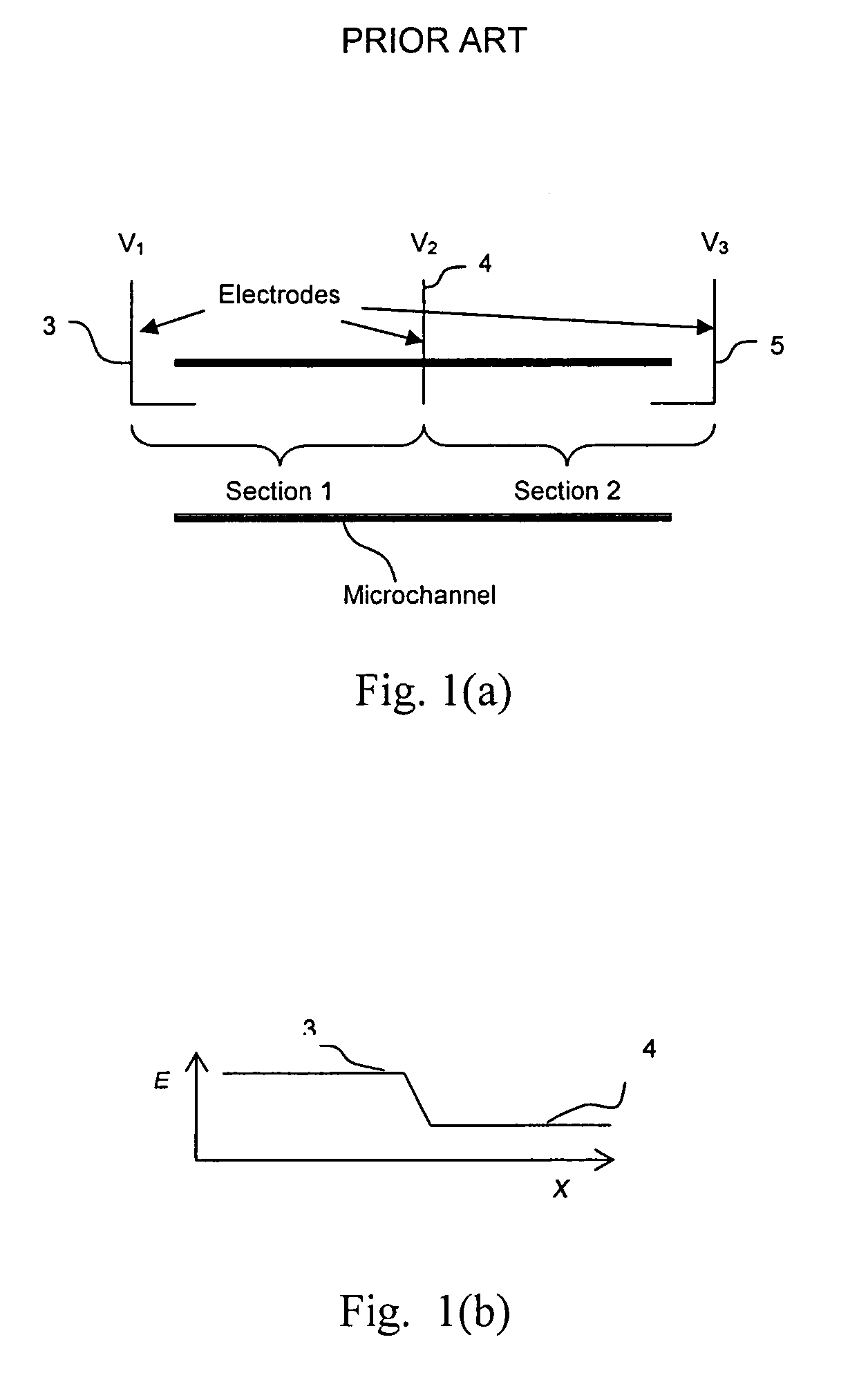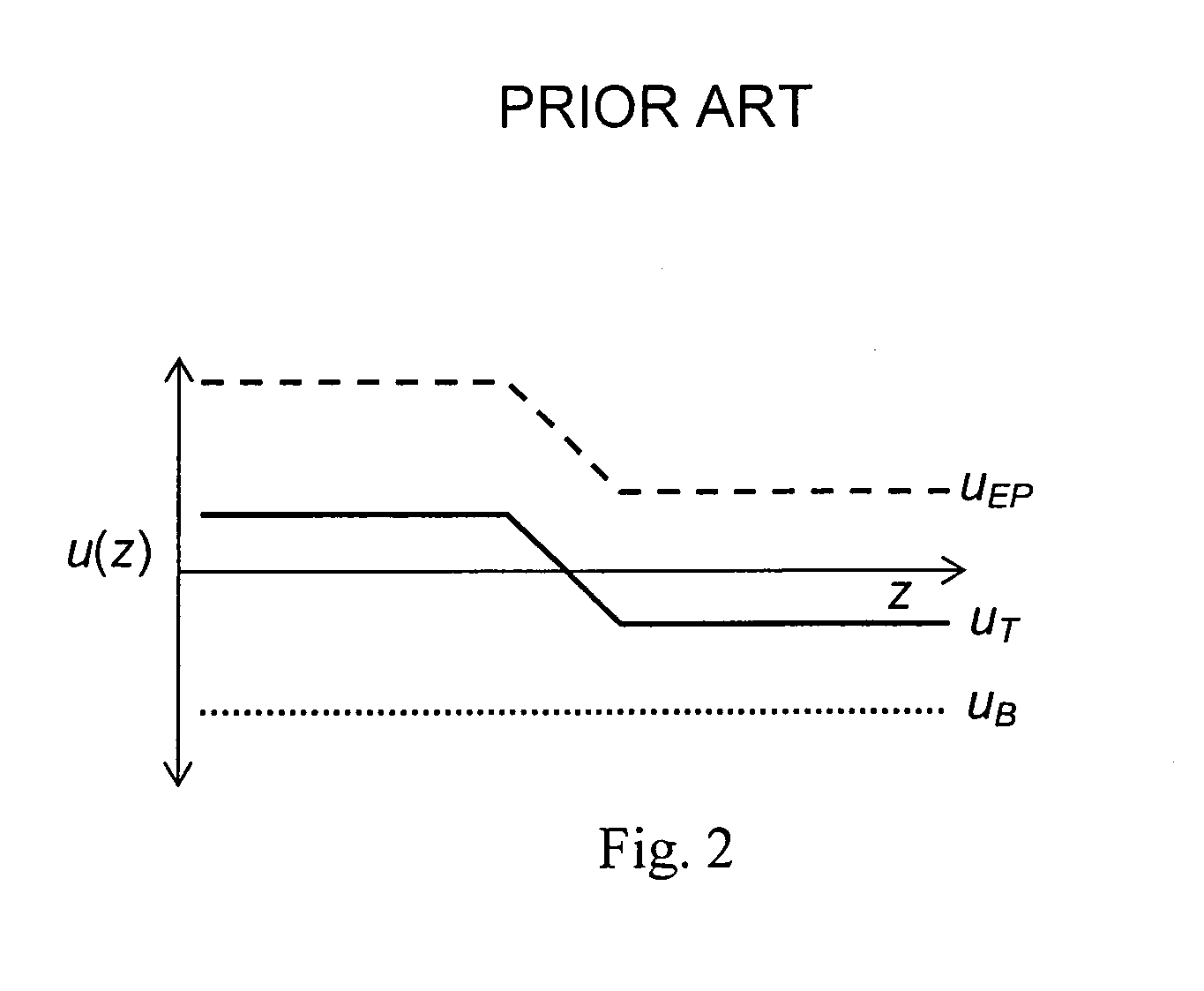Fluidic temperature gradient focusing
a fluidic temperature gradient and focusing technology, applied in fluid pressure measurement, liquid/fluent solid measurement, peptides, etc., can solve the problem of mismatch between extremely small quantities of samples, easy to be damaged, and difficult to construct microchannel devices
- Summary
- Abstract
- Description
- Claims
- Application Information
AI Technical Summary
Benefits of technology
Problems solved by technology
Method used
Image
Examples
Embodiment Construction
[0032]The present invention provides temperature gradient focusing of a sample in a fluidic device which includes a fluid conduit such as a channel or capillary tube. Temperature gradient focusing focuses analytes by balancing the electrophoretic velocity of an analyte against the bulk velocity of the buffer containing the analyte. If there is an appropriate gradient in the electric field, the total velocity of a given charged analyte, as determined by the sum of the bulk and electrophoretic velocities, can be set to zero at any point along the channel and all the analyte in the system is moved toward that point. However, in contrast to electric field gradient focusing where the electric field gradient is applied using a combination of electrodes and membranes, using temperature gradient focusing of the present invention, the necessary electric field gradient is produced by the application of a temperature gradient.
[0033]Further description of the present invention will now be made ...
PUM
| Property | Measurement | Unit |
|---|---|---|
| Length | aaaaa | aaaaa |
| Length | aaaaa | aaaaa |
| Temperature | aaaaa | aaaaa |
Abstract
Description
Claims
Application Information
 Login to View More
Login to View More - R&D
- Intellectual Property
- Life Sciences
- Materials
- Tech Scout
- Unparalleled Data Quality
- Higher Quality Content
- 60% Fewer Hallucinations
Browse by: Latest US Patents, China's latest patents, Technical Efficacy Thesaurus, Application Domain, Technology Topic, Popular Technical Reports.
© 2025 PatSnap. All rights reserved.Legal|Privacy policy|Modern Slavery Act Transparency Statement|Sitemap|About US| Contact US: help@patsnap.com



